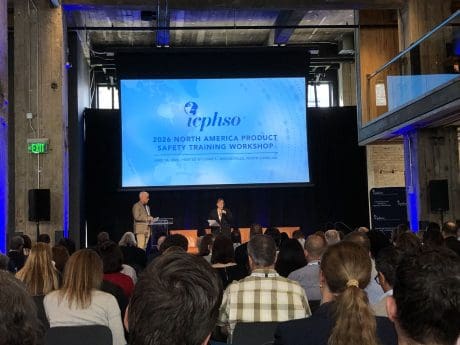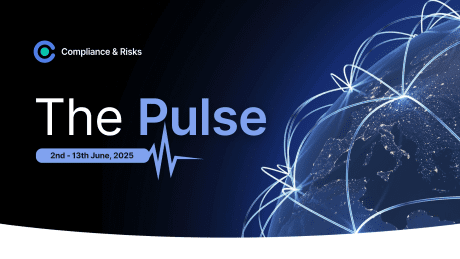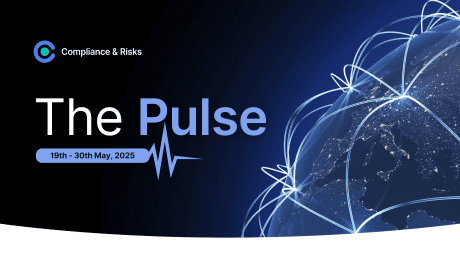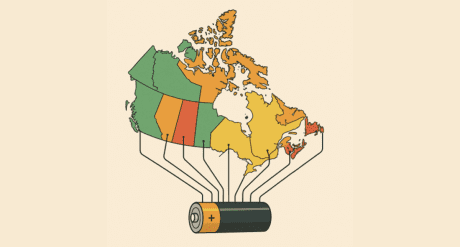
How To Interpret The Regulatory Impact On Your Products

In this blog, you will learn about the challenges of regulatory impact interpretation on your products. Feel free to skip straight to the section you’re interested in:
Product compliance – A constantly evolving process
In the past 5 years, there has been a 71% growth in global regulations across the world (see figure 1 below: source, C2P).
As a result, product manufacturers, retailers and suppliers are pressed to innovate quickly in order to create compliant products. Regardless of whether an organization manufactures the product or resells it, the responsibility to comply makes the manufacturer and the reseller legally accountable.
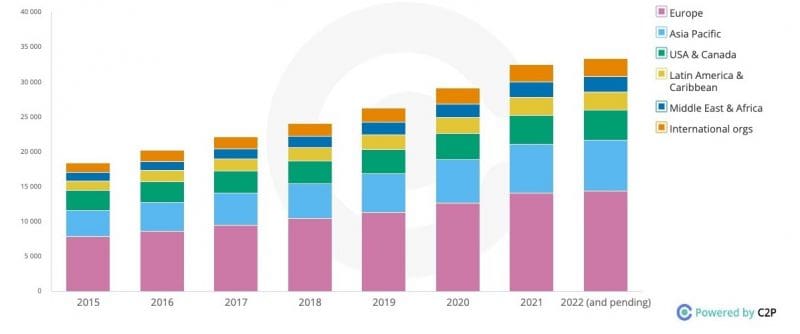
Launching new products to markets is a critical factor global manufacturers struggle with time and again.
Compliance managers need to ensure that a product is compliant with regulations and standards in international markets throughout its lifecycle to achieve business objectives.
Product compliance stands for determining applicable regulations to your product and managing compliance to those regulations for accessing global markets.
To ship compliant products to market, these are the three basic questions a Compliance Team needs to address to Achieve Market Access.
- How can I identify the relevant internal policies, regulations, and standards for each product in each market?
- How do I interpret the applicable regulations and standards to understand how they impact my products?
- How do I determine the necessary evidence to prove compliance for each product in each market?
Read on to discover the challenges of regulatory impact interpretation for modern-day products and why it is important to get it right.
Regulatory impact interpretation – Why is it so important?
Interpreting regulations and documenting the impact on products is often a blocker to achieving market access even after all relevant regulations, standards & internal policies have been identified.
- All steps that follow interpreting regulations & standards crucially depend on accurate and defensible interpretation – hence interpretation is a critical step in achieving market access.
“We just cannot misinterpret regulations and make mistakes..that creates a lot of our inventory loss.”
A global medical device manufacturer
- Technical regulations nowadays have become overly complex and overlap with each other. With different regulations for the same areas, there is a meticulous level of detail that various teams need to be clear about.
“The major task on our hands is to explain to the people at what level will it impact us and why? And how to fulfil these regulations, all of them simultaneously, but from a different perspective.”
Regulatory Manager, Product Manufacturing Company
- The increasing volume of regulations causes complexity which calls for the need to establish processes. Processes help ensure accurate interpretation is a priority across teams in time for a new regulatory update. They enable teams to weed out what is irrelevant so as not to drown in the majority of regulatory updates happening.
It may not be obvious, but companies spend a significant amount of time assessing the same law, which wastes time and resources.
Environmental Program Manager, National Instruments
Challenges to interpreting relevant regulations
- Regulatory information can be unclear.
- Lack of Subject matter experts (SMEs)
- Product engineers and designers don’t understand legislation.
- Interpretations need to be unambiguous.
- Ensure Harmonization is not disturbed across markets & products
To ensure market access, compliance teams now have to thoroughly check many existing regulations and ensure that product, packaging and more meet all areas of requirements. Many forms, certificates, licenses, test reports, etc., are required to successfully import and sell goods in a particular market. Hence it is laborious to keep an eye on various regulatory updates, daily google alerts, webinars, and spreadsheet trackers. They are only as good as the infinite hours they take to keep up to date, ultimately making a compliance manager’s day frustrating and seemingly out of control.
“It’s a little bit like drinking from a water hose.There’s so much information that’s coming at you.”
Meg O’Keeffe, Product Manager, Compliance & Risks
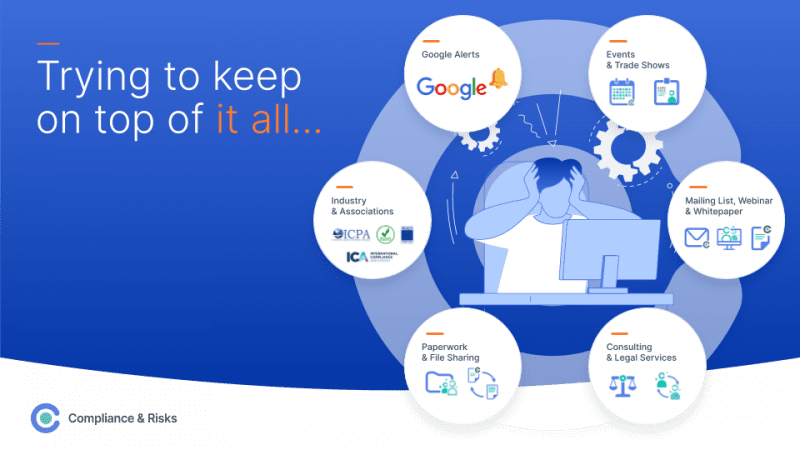
- Lack of Subject matter experts (SMEs)
SMEs need to read through each regulation document to determine its relevance and application to their products. However, assessing irrelevant regulations is a time-taking process since critical information is usually unclear or buried in the document. For eg. product assessments of key dates on when the regulation is due to come into force.
- Product engineers and designers don’t understand legislation.
Product Engineers and designers often do not have a legal background and hence find it difficult to decipher regulations written as legal documents. They just want to know what they need to do for the product to comply. As a result, the SME team has to collaborate with the product team early and often to ensure decisions are actionable.
- Interpretations need to be unambiguous.
Ambiguous interpretations can cause product engineers and designers to make different decisions that serve the same purpose. It is important to have a clear interpretation since different teams may be assessing the same regulation for different products. Regulations change from time to time and hence are complicated to identify and understand. Additionally, ambiguous decisions are not defensible during audits leading to complications when/ if the market surveillance authorities put in a request to prove compliance.
- Ensure Harmonization across markets & products
It’s essential to determine how an interpretation works when taking a harmonized approach to compliance. You may have a confident interpretation that works for a specific market, but how does that decision impact the same product being sold in adjacent markets? A decision on the coating application for a drinking water product in the UK may conflict with the compliance requirements for the same coating in France.
“This diversity in regulations kills the entire compliance effort. Where you multiply resources required, you multiply the budget that you need for fulfilling all these certification testing and whatever requirements.”
Regulatory Manager, Lighting Manufacturing Company
The consequence of misinterpreting regulations and standards
Teams working on regulatory impact interpretation need to be quick and accurate. Companies don’t have the luxury of stepping through regulation slowly while contemplating its meaning. The more time lost in contemplation, the more the business and product are impacted with longer times to market.
Often, the same product is sold in multiple markets. Hence companies intend to harmonize compliance requirements to reduce the number of product variants. To work with this overarching compliance strategy, teams must ensure that any interpretation made for a legislation reflects a minimal level of compliance in target markets.
A consequence of misinterpreting a regulation or interpreting it in a way that is not defensible could mean the product facing compliance issues. Additionally, teams need to reassess and determine risks that the existing stock might face. This might negatively impact the company’s ability to meet targets and compete in the market.
Recently, a bulb manufacturer misinterpreted the standards and removed some information on the body of the bulbs. Mandatory information was missing and they had to rework on all the bulbs due to the quantity of the product impacted.
Regulatory impact interpretation to drive regulatory requirements is therefore a key aspect of ensuring uninterrupted market access. The good news is that it doesn’t have to be such an extensive process. Digital innovation is the key to a more dynamic way to interpret regulatory impact.
Unequivocal & Defensible interpretations – How can C2P help?
C2P is a compliance SaaS solution providing everything you need in one place to take control of regulatory changes and ensure market access in over 195 countries worldwide. C2P can help you in 3 key areas to help ensure unequivocal & defensible interpretations,
- Technology solutions and regulatory content interpretation services help curate and maintain all compliance requirements. C2P enables you to make compliance decisions & document the impact on your products. Confidently manage the regulatory impact on your products with a set process & systems in place.

- Second, our regulatory experts extract upcoming dates to help identify when regulations will take effect. Efficiently plan for the future and stay in control of your compliance status.
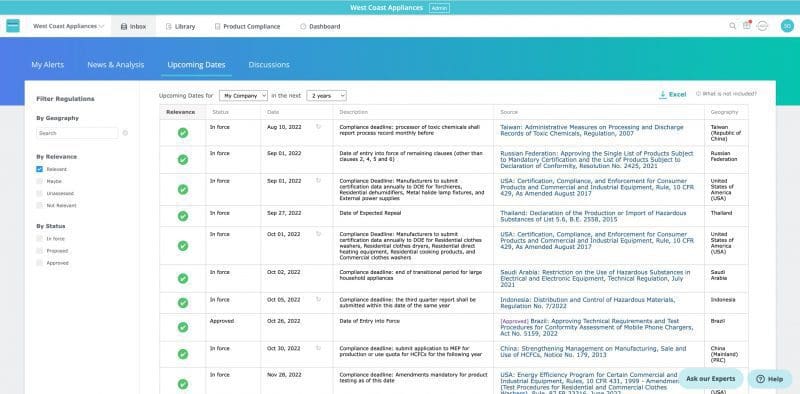
- Third, our translation services help ensure every relevant compliance source is available in English, enabling compliance SMEs to interpret the impact on your products. Faster time to market with translations & expert advice available in just a few clicks.
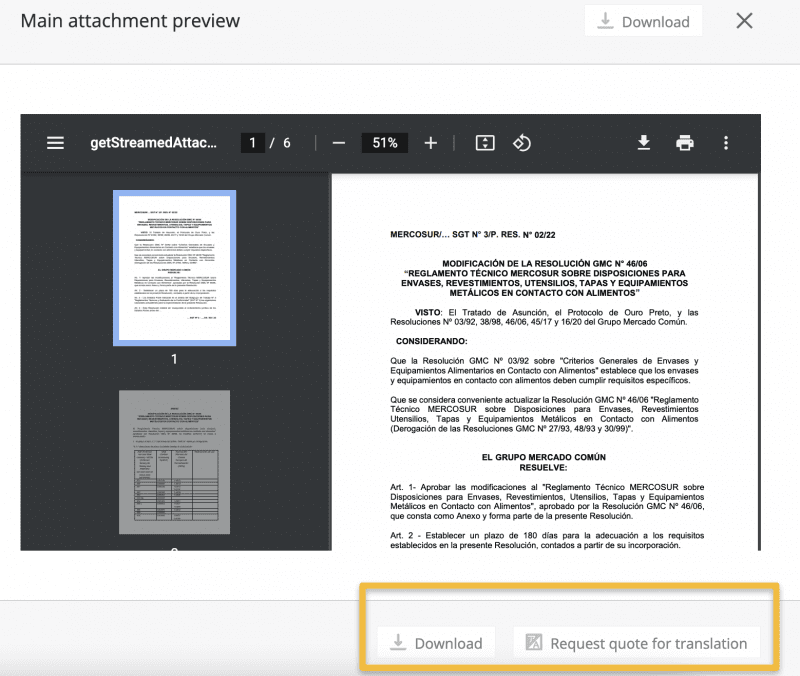
Interested in learning how C2P can help interpret the impact of relevant regulations on your products?
Talk to us to know more.
Sources:
https://www.infosys.com/manufacturing/resource-center/Documents/product-compliance-constantly.pdf
https://www.nortonrosefulbright.com/en/knowledge/publications/59c9fd8d/update-on-product-compliance
https://integrityriskintl.com/eu-regulatory-compliance-trends-2022/



